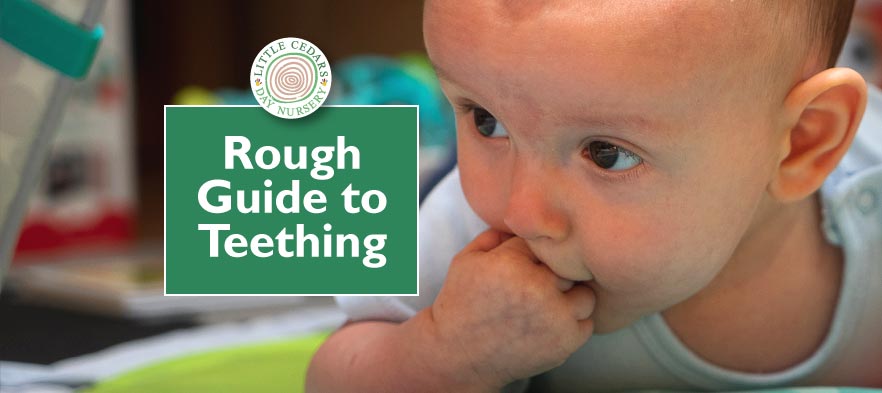
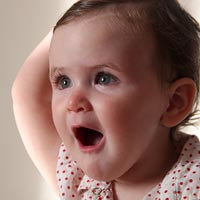 Teething can be an uncomfortable and painful stage for babies. As teeth start to come through, gums can become sore. Because of this, the little ones can become irritable and emotional, without really understanding why they’re feeling as they do. Every parent will know that having an irritable, tearful baby can be stressful for parents as well as for the baby. With all of this in mind, our Rough Guide to Teething should help parents to help their babies through this difficult stage.
Teething can be an uncomfortable and painful stage for babies. As teeth start to come through, gums can become sore. Because of this, the little ones can become irritable and emotional, without really understanding why they’re feeling as they do. Every parent will know that having an irritable, tearful baby can be stressful for parents as well as for the baby. With all of this in mind, our Rough Guide to Teething should help parents to help their babies through this difficult stage.
When Does Teething Start?
Teething is the process of the milk teeth beginning to “erupt” (protrude) through the gums into plain sight. It usually begins when children reach the age of about 6 months. It varies, though, with some children even being born with one or more teeth. Usually, though, teething follows a general pattern, as follows:
- First, the central incisors in the lower jaw are usually the first teeth to appear. This normally happens at the age of about 6 to 10 months.
- The upper central incisors follow closely behind, at 8 to 12 months on average.
- Between 9 and 13 months of age, the top lateral incisors usually come through with the those in the lower jaw appearing between 10 and 16 months of age.
- The first upper molars come through between the ages of 13 and 19 months, with the first lower molars appearing from 14 to 18 months of age.
- The canine teeth usually appear between 16 and 22 months of age in the upper jaw and between 17 and 23 months in the lower.
- Finally, the second molars usually come through between 23 and 31 months of age in the lower jaw and between 25 and 33 months of age in the upper.
For each tooth that erupts, the teething process takes about 8 days, including roughly 4 days before the tooth is visibly protruding through the gum and 4 days where it moves through and into plain sight. During the 8 days, an “eruption cyst” (a bluey-grey colouration) may be visible on the gum in the area concerned. Of course, all of this can be uncomfortable and painful for the baby, particularly when the larger, back teeth come through — but it’s something we all go through. Ultimately, babies will usually end up with 10 milk teeth in the upper jaw and 10 in the lower by the time they’re 2½ to 3 years of age.
What are the Signs of Teething?
 Along with the bluish-grey colouration in the gums mentioned above, other signs of a teething baby include drooling, sore-looking gums, red cheeks, the baby being tearful, rubbing their ears or chewing hands/toys more than usual. If the baby does drool, ensure that their faces are regularly wiped so as to avoid painful rashes causing further discomfort.
Along with the bluish-grey colouration in the gums mentioned above, other signs of a teething baby include drooling, sore-looking gums, red cheeks, the baby being tearful, rubbing their ears or chewing hands/toys more than usual. If the baby does drool, ensure that their faces are regularly wiped so as to avoid painful rashes causing further discomfort.
How Can You Help a Teething Baby?
Parents can help teething babies in several ways. Distraction is a powerful tool, so anything that will distract the baby from their discomfort can help — for example, playing with the infant.
If the baby or toddler is chewing things, giving them a commercially-available teething ring can give you greater control over exactly what they are chewing and allow you to ensure that you are keeping it clean for them. Always follow safety instructions, of course, and buy only from an appropriate, high quality, safe source.
The NHS also suggests giving teething children (6 months to 1 year or older) sticks of apple, carrot, breadsticks or bread crusts to chew on but this must be done under close adult supervision otherwise they could be a potential choking hazard.
Teething can be painful for the baby, so gently massaging affected areas of the baby’s gum with a clean finger can also soothe them to an extent.
Beware Unlicensed Teething Gels
Some parents may be tempted to buy Teething Gel for their infant. The NHS warns parents to be careful if doing so, as there are some dangerous products out there, particularly on the Internet and particularly when it comes to ‘homeopathic’ teething products. They state that there is no known evidence to suggest that teething gels work in any case, whether they’re licensed, unlicensed or homeopathic gels. However, if parents do decide to use them, they should only purchase them from proper UK pharmacies whilst ensuring that the gels are licensed for use in the UK. NHS information about the potential dangers of teething products, particularly homeopathic ones, can be found here.
Teeth Showing? Start Brushing!
 Once your baby has one or more teeth showing through the gum, you should start brushing their teeth right away. This typically happens at the age of about 6 months. Take a look at our Ultimate Guide to Brushing Teeth for Babies & Children for much more information, including when to start, how to do it, what fluoride content the toothpaste should have, what to use as a brush — and much more.
Once your baby has one or more teeth showing through the gum, you should start brushing their teeth right away. This typically happens at the age of about 6 months. Take a look at our Ultimate Guide to Brushing Teeth for Babies & Children for much more information, including when to start, how to do it, what fluoride content the toothpaste should have, what to use as a brush — and much more.
Share if you Found This Useful
If you found this Rough Guide to Teething useful, please feel free to share it on social media or on other sites. You can link to this article, bookmark it in your browser or share this link in your social media accounts so more babies can benefit. Thank you.
We are a High Quality Nursery in Streatham
 If you are looking for outstanding nurseries in Streatham, please do consider Little Cedars Nursery. We are a nursery and pre-school, offering the very best childcare services in the Streatham, Streatham Hill, Streatham Common, Streatham Park, Tooting, Furzedown and Balham areas around London SW16. For a nursery place for your baby, toddler or child under five, please get in touch via one of the contact options below:
If you are looking for outstanding nurseries in Streatham, please do consider Little Cedars Nursery. We are a nursery and pre-school, offering the very best childcare services in the Streatham, Streatham Hill, Streatham Common, Streatham Park, Tooting, Furzedown and Balham areas around London SW16. For a nursery place for your baby, toddler or child under five, please get in touch via one of the contact options below:

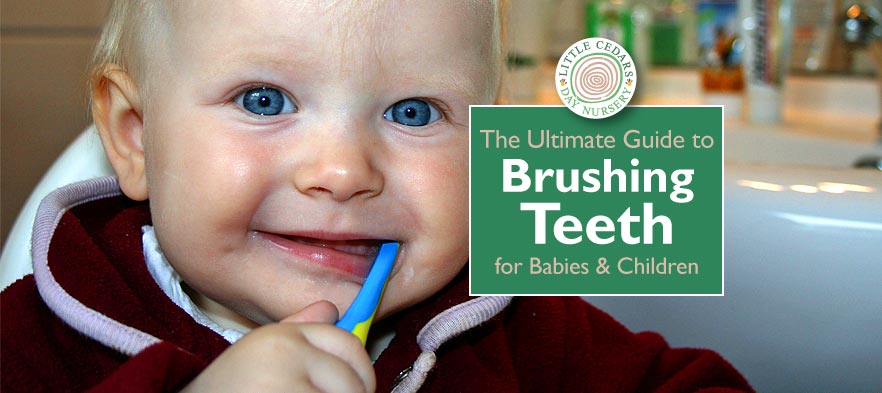


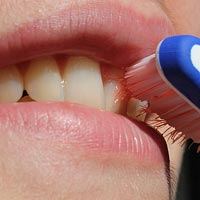 It’s important to get children used to visiting the dentist and for this to be a positive experience. Dentists can highlight any potential problems early on and regular visits will also ensure that children realise the importance of teeth cleaning and oral hygiene as they grow. Starting early is also more like to avoid the possibility of them being nervous about visiting the dentist (if you are nervous yourself, try not to let this show as it could project the fear onto your child). NHS dental treatment is free for UK children.
It’s important to get children used to visiting the dentist and for this to be a positive experience. Dentists can highlight any potential problems early on and regular visits will also ensure that children realise the importance of teeth cleaning and oral hygiene as they grow. Starting early is also more like to avoid the possibility of them being nervous about visiting the dentist (if you are nervous yourself, try not to let this show as it could project the fear onto your child). NHS dental treatment is free for UK children. 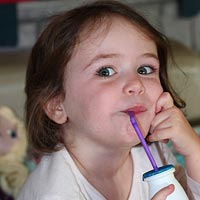 Sugar and tooth decay go hand-in-hand, especially if too much sugar is in the diet and/or if toothbrushing isn’t regular and thorough. The amount of potential decay is also made worse the longer sugar stays on the teeth. Cutting down on sugar intake will help limit the problem, as will a good tooth brushing regime. Here’s what parents and carers of babies and young children can do:
Sugar and tooth decay go hand-in-hand, especially if too much sugar is in the diet and/or if toothbrushing isn’t regular and thorough. The amount of potential decay is also made worse the longer sugar stays on the teeth. Cutting down on sugar intake will help limit the problem, as will a good tooth brushing regime. Here’s what parents and carers of babies and young children can do: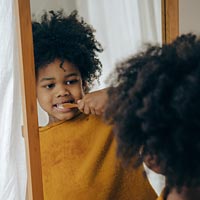 Getting the approach right means healthier teeth and gums, fresher breath, better looking teeth, more self-confidence and potentially better health overall as the child grows up. Setting good teeth cleaning and tooth hygiene habits early on means children are more likely to continue the good work as they grow into adulthood. This includes regular, fear-free visits to the dentist for check-ups.
Getting the approach right means healthier teeth and gums, fresher breath, better looking teeth, more self-confidence and potentially better health overall as the child grows up. Setting good teeth cleaning and tooth hygiene habits early on means children are more likely to continue the good work as they grow into adulthood. This includes regular, fear-free visits to the dentist for check-ups.